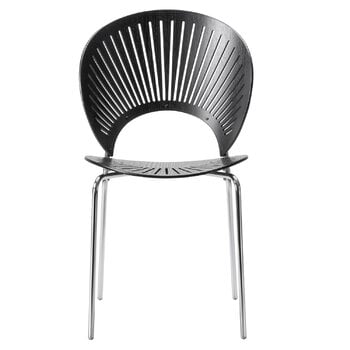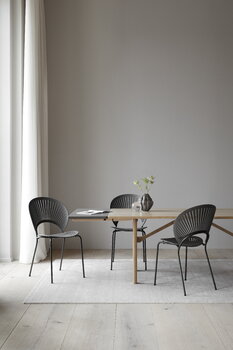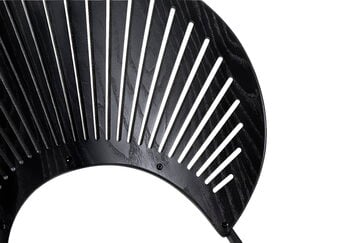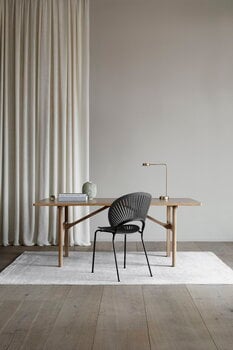Fredericia's Trinidad is an attractive, decorative chair designed by Nanna Ditzel in 1993. Trinidad catches the eye with its rounded ash backrest and cutout fretwork which gives the chair a fan-like look and filters the light in a playful manner. The seat has been curved from the sides, making it pleasant to sit even for longer periods, and its delicate appearance is complemented by slim steel legs.
Ditzel found the inspiration for the chair from the gingerbread facades that decorate local houses on the Caribbean Island of Trinidad – hence the name of the chair. The Trinidad chair gained wide success soon after its release, and today it is considered a classic of modern Danish design. The chair has been manufactured in Denmark.













